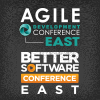Agile Development Conference & Better Software Conference East 2011

PRESENTATIONS
|
Better Software Conference East 2011: Writing High Quality Code
Quality in delivered software is intangible and very different from quality in physical goods. Some external attributes of quality software-free from defects and easy to maintain-are reflections of the code's internal qualities. When classes and methods are cohesive, non-redundant, well-encapsulated, assertive, and explicitly coupled, they are less prone to mistakes and far easier to debug, test, and maintain. |
David Bernstein, Techniques of Design |
|
Beyond Business Analysis: Becoming A Trusted Business Advisor
Stand in a room full of business analysts and you are bound to hear the phrase "gather and document requirements" way too often. Many of today's business analysts have an image problem, resulting from their limited-often self-imposed-role on projects. However, business analysts have the opportunity to move beyond an analyzing and documenting role to become a trusted advisor to the business. |
|
|
Building Secure Applications
The Internet is full of insecure applications that cost organizations money and time, while damaging their reputations when their systems are compromised. We need to build secure applications as never before, but most developers are not now-and never will be-security specialists. By incorporating security controls into the frameworks used to create applications, Tom Stiehm asserts that any organization can imbue security into its applications. |
|
|
Cloud Enabled Development: Making Fast Go Faster
As software development teams seek greater efficiency and effectiveness, they often find that they are held back by old IT architecture for development and test. They wrestle with low-powered servers, difficult-to-scale static environments, and a slow IT provisioning and change processes. Today, software leaders at Calypso, Centric Group, Serena Software, and others have radically changed the way they build, test, and deploy software-almost exclusively using cloud computing to power their development processes. |
|
|
Continuous Integration: Sign of a Great Shop
Relentless automation is the sign that your software team has discovered how valuable their time is and how much of their day can be wasted performing trivial tasks. Using Jenkins, an open source tool as an example, Jared Richardson demonstrates how to get started with continuous integration, a powerful automation technique that binds your team together and help ensures that your project runs smoothly and efficiently. The concept is simple-after every code check in, code is compiled and comprehensive automated tests are run. |

Jared Richardson, Logos Technologies |
|
Dealing with Stories: Sizing, Tracking, and Defining "Done"
For story estimating and tracking, Ken Pugh finds the same issues seem to crop up on many teams-whether a story is too big, too small, or just right; how best to track stories; the definition of “done” for a story; and what should be represented as stories, as tasks, or as issues. Using real-world examples, Ken shows you how to estimate story size and how to use acceptance tests to divide stories into right-sized chunks that benefit both customers and developers. |

Ken Pugh, Net Objectives |
|
Defect Analysis: The Foundation of Process Improvement
Do you have a process in place to analyze defects, identify the defect categories and common pitfalls, and correlate the results to recommended corrective actions? Forced to get more done with less, organizations are increasingly finding themselves in need of an effective defect analysis process. David Oddis describes a systematic defect analysis process to optimize your efforts and enable higher quality software development. |

David Oddis, The College Board |
|
Designing Agility that Lasts
Every day more agile practices and styles emerge, overlap, and complete. This proliferation challenges you to choose from among XP, Scrum, Lean, Kanban or the ways of the Lean Start Up crowd. Instead of stumbling onto one path or another, come to this session where David Hussman teaches tools for assessing and designing an agile process or set of practices which speaks to your needs and constraints. |

David Hussman, DevJam |
|
Development Productivity: The Science behind Motivation
When there is a defined task with a clear set of rules to follow, rewards are an excellent way to encourage desired behavior. In situations where creativity, innovation, and thinking “outside the box” are essential-as in software development-rewards are actually a terrible strategy to use. They narrow the person’s focus and restrict possibilities. When it comes to your creative work, wouldn’t you be happier and more motivated if you were given the freedom to choose how you work? |
|
|
Eight Limitations of Mobile Platforms
Soon mobile devices will be able to do most everything, right? Although it's fun to talk about how much mobile devices can or will do soon, limitations and constraints remain now and will for a long time. With the lower-tier market offering scaled-down devices, even the latest generation mobile devices have hardware, network, and operating system constraints. These limitations will seriously affect the architecture, design, and testing decisions for your mobile development projects. |
|


